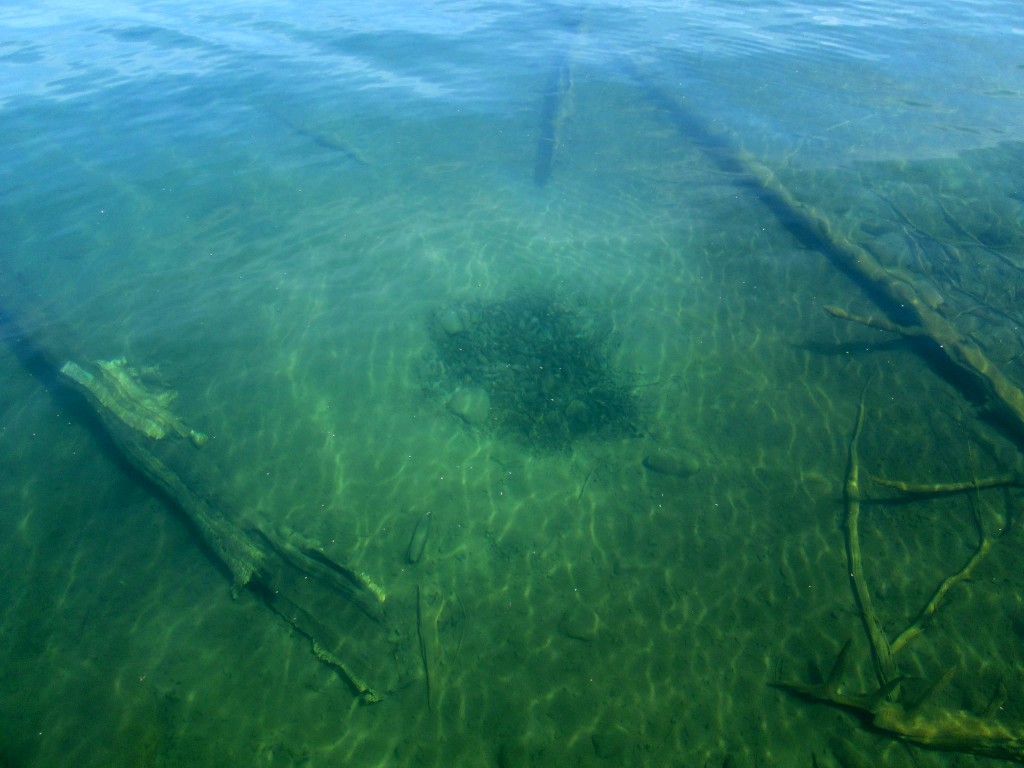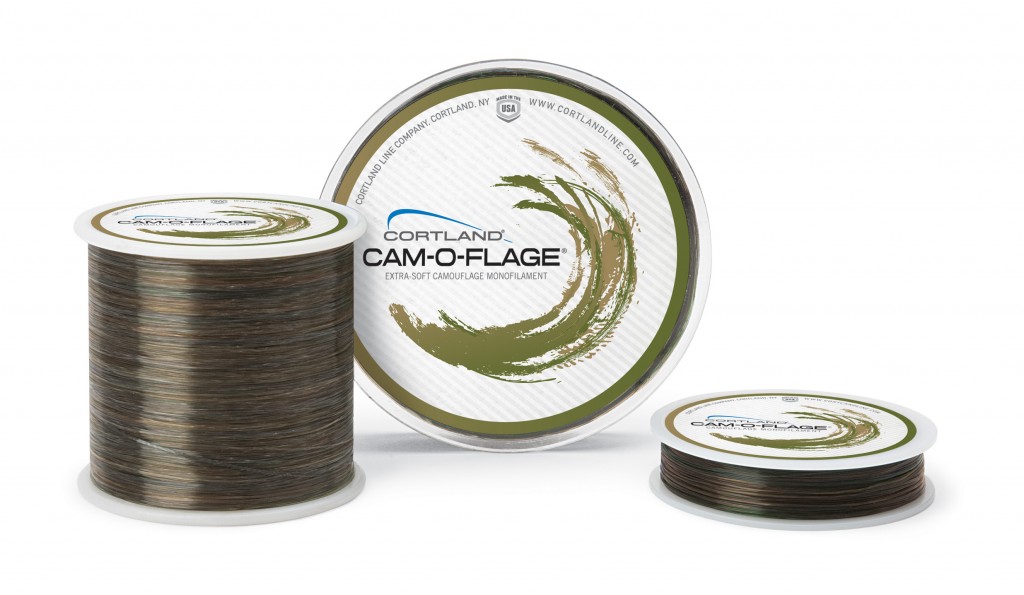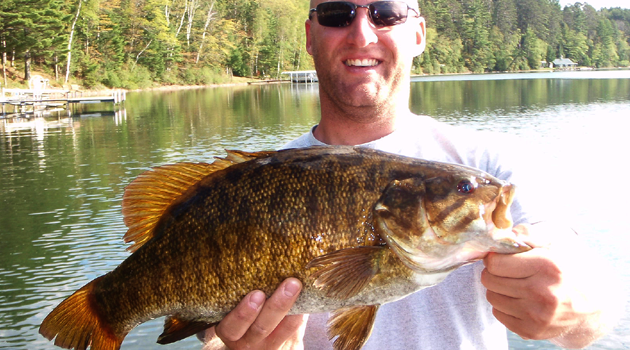Gin clear waters greatly intimidate anglers, driving them away from some of the best smallmouth waters there are. Anglers fishing these waters usually doubt their skill, but smallmouths easily counter and often oblige, striking baits from great distance aided by bright sunlight and its Smirnoff colored water.
I fish a variety of smallmouth bass waters and various water clarities throughout Wisconsin, Ontario and the Great Lakes. I like them all, but in my opinion, smallmouths are substantially easier to catch from clear water than murky brown and dark water environments. These clear waters also contain the better, trophy fisheries.
Smallmouth are adept visual feeders that are most active in sunny daytime conditions. Most anglers believe that lowlight, overcast days fare best on clear bodies of water. However, that is merely opinion and not a fact. Fact is, with smallmouths being more active during daytime, and most responsive to sunlight and in a happier mood, don’t let water clarity prevent you from catching. This will work to your advantage if choosing the proper lures, presentations, and colors. Due to their keen eyesight, anglers must disguise their lures and alter their approach, which calls for finesse and matching the hatch. If you can see the bottom from atop your casting decks, the fish will surely find your lures, and maybe even you.

Image by Johnny Amato. Taken from an ultra-clear trophy smallmouth lake in Northeastern Wisconsin.
Lighten Up
With pristine waters come difficult decisions to entice big smallmouth bass. Finesse presentations aren’t required on every clear water fishery, but they greatly help with catching more fish and are a can’t-miss tactic.
Long casts with downsized lures is the key to clear water smallmouth fishing. Consider using a longer 7 foot medium action rod with light braid and a thin flourocarbon leader to avoid spooking wary fish. Or better yet, why not fish old school with monofilament or copolymer?
I’m often questioned, and sometimes interrogated by the largemouth bass anglers I know from Illinois who always ask, “Why don’t you just fish with braids and heavy rods like we do?”
First, about 75% of my best smallmouth waters have secchi disc readings of 20 or more feet. This calls for using thin lines with little to no visibility at all. This also requires downsized gear, making lighter and more sensitive rods, reels, and lines a must. Does it seem natural to fish these same waters with a 7 foot flipping stick spooled with 30 lb braid that would be better suited for the dingy largemouth lakes and weedy ponds instead? Absolutely not. A few seasons back, I had a friend and first-timer join me on an early summer smallmouth trip and he quickly learned there is no place for these tactics on many of my clear northern waters.

What many smallmouth anglers fail to understand is that monofilaments and copolymers are not a thing of the past. They are just as applicable today as they were in their infancy during the 1950’s and 60’s. I use these lines, mostly copolymer, ranging from 6 to 10 lb test about 80% of the time for clear water bass. However, if braided superlines are indeed used for smallmouths (yes, I use them a lot myself also), I use nothing greater than 20 lb size, which in comparison is about 6 lb diameter in monofilament. Lighter line whether it’s a clear monofilament and copolymer, and 100% fluorocarbon or hybrid-fluoro is the best way to go about business when dealing with clear water and its high visibility.
Naturalize
Keeping your baits looking as natural as possible, in appearance and movement, is the trick to catching clear water fish. Scaling down with natural baits that have the abilities to match the hatch is a technique I select for fishing clear water. Strike King coffee tubes, YUM craw bugs, Kalin’s lunker grubs and Bass Pro Shops Tournament Series Caterpillar Grubs on a minnow head, and jigworms fished with 1/8 oz. heads will usually do the trick. Additionally, power shotting and 4 inch soft jerkbaits in fluke style are effective too. Natural colors representing crayfish and baitfish such as black, brown, pumpkin, sand, smoke, motor oil, and white are excellent choices, as is a natural more subtle approach to working the bait such as swimming, dead sticking, and dropping.
If not adept with fishing soft plastics on a jig, consider power fishing techniques with jerkbaits.
Jerkbaits have outstanding drawing power, bringing in active fish from far distances away. They’re one of my favorites for clear water, because outside of a swimming grub that can be bomb-casted and steadily retrieved, there’s not a more efficient lure for covering clear water quickly. From cold water conditions in spring and fall with the warmth of summer in between, I’ll frequently fish with a downsized Rapala X-Rap 08 as they cast far with a spinning rod and reel spooled with 8 lb line, and impart a lot of action.
Sky conditions will dictate my color choices moreso than water clarity and presence of baitfish. I often select translucents and natural colors such as purple gold, albino shiner, and mossback shad on bright days and when it’s sunny or windless. Meanwhile on darker, overcast days and when it’s windy, I opt for bright colors such as hot head and clown.
Clear water smallmouth are difficult fish to catch on any presentation, but experimentation and adapting to conditions are the most important procedures anglers can make.
Fish Deeper
In most clear water lakes, and unless it’s dusk or after-dark, smallmouths often feed along the deep secondary dropoffs which may be situated in 10 to 20 feet, and in some lakes even substantially deeper. These areas tend to have 45-degree angled slopes and they’re easy to find by observing the lake’s shorelines and upland banks. Additionally, smallmouths also tend to move offshore and spend a lot of their time on, and suspended off of, deep structure. Anglers perceive these fish to be more difficult to catch, but that’s because proper techniques and mind-set aren’t being applied. In order to catch these deeper fish, patience is the keyword. And fishing slower and methodically with the techniques highlighted above is the necessary tactic.
Clear water results in spookier, more wary fish. Spookier, wary fish leads to deeper daytime locations for feeding and cool water sanctuaries. On these lakes, don’t be the bank hugging guy fishing the shallows containing fewer and more difficult-to-catch fish. Locate the fish deeper along areas of contour and structure with electronics, as most of the time these will be their locations.
More than anything, and often overlooked, smallmouths mainly use deep water as an invisible source of cover. Meaning, they can hide in darker, deeper water and still ambush prey by trailing open schools of ciscoes and smelt….. and that’s an entirely different can of worms, which for the respect of a word limit, I will save for the next article.
Don’t let clear water and high visibility frustrate you. Follow this simple guide and be prepared to fish slower, subtle, and stealthier. Unlike anglers, I doubt smallmouths read articles, so chances are you’ll have the upper hand and a better clarity for succeeding on clear waters.







